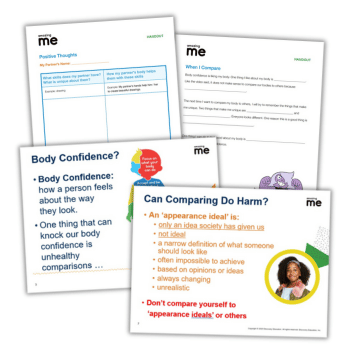Live marking – How immediate feedback helps students learn and reduces teacher workload

Practice makes perfect? Only if you're practising the right things. And instant feedback will help keep students on the right path and avoid getting smacked in the face, metaphorically speaking, says Lee Simpson…

- by Lee Simpson

“I thought that I was beginning to improve”. That’s what I’m thinking as I sidestep away from my opponent and realise there’s blood streaming from my right nostril. That’s when I decide that my new sparring plan isn’t working.
I am reminded of that famous line from Charles “Sonny” Liston, the World Heavyweight Champion in the early sixties who so terrorised the division while he was at his peak.
A reporter asked him what he thought of his opponent’s plans. Liston replied laconically, “Everyone has a plan, until I hit them in the face.”
Sonny wasn’t that impressed with plans.
My plan had been simple, or so I thought. Previously in sparring I had been disengaging from my attacks to get quickly out of range, or anticipating my opponent’s jabs and sliding back to evade them.
This time, I had planned not to evade, but to catch my opponent’s jab, remain in close, and counterattack from that range. I felt that my guard would be hard to penetrate and protect me from any damage.
Now, my nose was telling me otherwise.
The thing with boxing is that a fighter gets immediate feedback. Pain and blood are excellent motivators to encourage adjustments – and therefore make the fighter improve their technique.
It’s simple. If you don’t adjust your technique, then the pain comes back – and normally it hurts more the second time.
There are around 15 other lads standing around the ring watching me spar. Each of them offers criticism, advice and encouragement as they see fit.
At the boxing gym we are observed throughout the whole session, receive feedback, and act on it immediately.
One of the coaches, “Jesse” James, shouts at my opponent, “Bruv, sparring isn’t a war. You’re helping each other learn, remember?”
But I wave my right glove to say I am fine with the intensity, because arguably we learn more from our mistakes, and I know I will reflect on this experience.
It’s just ‘live-marking’ really, isn’t it? The way we might use a students’ work under a visualiser, or take copies of students’ writing, and help them to improve right there and then.
Which, by the way, is a great means of ensuring that the feedback loop, the time between a student producing work, receiving feedback and improving his or her skills is as short as possible.
All of the educational research indicates that the quicker you provide feedback, the greater its impact on progress. And what can be quicker than live and immediate?
Oh, and it will reduce your workload too. If you “live mark” work and students understand the criteria you use for this, then they can learn to mark their own work accurately – and everybody wins!
After the sparring is over, I speak with Paddy, the owner of the gym. He had been observing the sparring session too, and during our coaching conversation, I make the mistake of using the phrase “practice makes perfect”.
“You know better than that, Teach,” says Paddy grinning at me. “Practice simply creates quicker and more confident physical and mental reactions. You have to practise the right things to be a success. And that’s where I come in, isn’t it? I give you the right feedback. You put in the required amount of practice. Then, you improve.”
“Sounds right to me,” I say to Paddy. “Can you give me an example of what you mean so I can explain it clearly to a group of people?”
“Sure Teach,” he says. “Imagine you have a two-year-old child who trusts you. The child asks you what 2+2 equals and you say 5. From then onwards, you repeat the process over and again, practising the child’s response until he has memorised that fact. Now, when that child goes to school and the teacher asks: what’s 2+2? Well, he’s gonna remember all that practice he did with you. His eager little hand will shoot up with confidence and then he’ll tell the teacher 5. And he knows the answer is 5 because of all the practice you put in together.”
I laugh then, because the example is so obviously right.
“You see Teach, you have to practise the right things. Practice alone is not enough. That’s why the coach is so important.”
This advice is reinforced by Bill Walsh in his excellent book The Score Takes Care of Itself, and John Wooden in his inspiring book On Leadership.
Both men, as coaches of highly successful sports teams, insisted that we improved as practitioners and students through focusing on specific skills and repeating these until they got better.
It is interesting that both coaches encouraged less “game” time and more practising of specific skills.
Their view was that the time they had with their players was too important to waste on unstructured practice, like an actual game they couldn’t control, but that success came from the structured practice of key skills modelled perfectly to students so they could Practice Perfect.
Paddy agrees. He tells me how boxing can be beautifully summed up in a small number of moves for attack and defence – around nine for each.
This makes the sport seem less complicated to the inexperienced fighter. He then isolates the right skills for each fighter to practise in sparring and works on these.
In practice, this might take the form of Paddy as a coach saying that the focus of sparring will only allow straight shots and defensive moves, no hooks or uppercuts. The consequence of this is improvement in a fighter’s technique in a less-stressful environment.
Think of this from my perspective as the student. If I only have to think about my opponent attacking with two shots, then I will experience less stress and focus on the learning in the sparring – my own two attack shots and my defensive moves, rather than the fear of getting hit by serious combinations of punches that might increase my stress.
Fortunately, as teachers, our profession doesn’t have the element of physical pain to encourage us, or our students, to reflect and make improvements to our practice. So how does this apply to our classrooms?
Well, think of your last series of PPES (Pre-Public Exams). Did you isolate the skills required to answer the questions successfully and use the Direct Instruction and Modelling methods to practise answering questions in the less-threatening environment of your classroom as a regular part of learning?
Or, did you fill your students full of the facts and the kind of things that they should put in their answers, tell them to revise and then send them out to dive straight in?
Well done if you chose the first – you’re onto something.
Paddy often reminds me of how stressful exams are for our young people, and how the best way to achieve exam success is to take away the stress – like he takes it away in sparring sessions.
“They turn over the paper, and what do they feel?” he asks me. “Fear and stress,” he says answering his own question.
“And how do you take that away?” he asks in a quick combination of rhetorical questions and answers. “You do it through isolating skills and taking away fear through repetition and practice. This gives the kids confidence in themselves, and you as a teacher too.”
“Well Teach,” he stops abruptly, “we’ve talked enough now and it’s time for you to Practise Perfect. So get on the bags and make sure you work on your movement in the ring to protect that nose of yours.”
So, that’s it for the fistic facts this week colleagues and friends.
Don’t think that “practise makes perfect”. It’s the right practice – “Practice Perfect” that will make the difference.
So I’ll practise what I intend to do next time I spar, even though I have Charles “Sonny” Liston’s words ringing in my ears, “Everyone has a plan, until I hit them in the face.”
Wish me luck!
Lee Simpson is director of learning and strategic partnerships at Denefield School, and secondary programme lead for the Berkshire Teaching Alliance. He trains at Fitzpatrick’s Boxing Gym in Swindon.
This feature is the latest instalment in his Pugilistic Pedagogy series, on how taking up boxing has informed his teaching. Click these links to read Part 1, Part 2 and Part 3.










